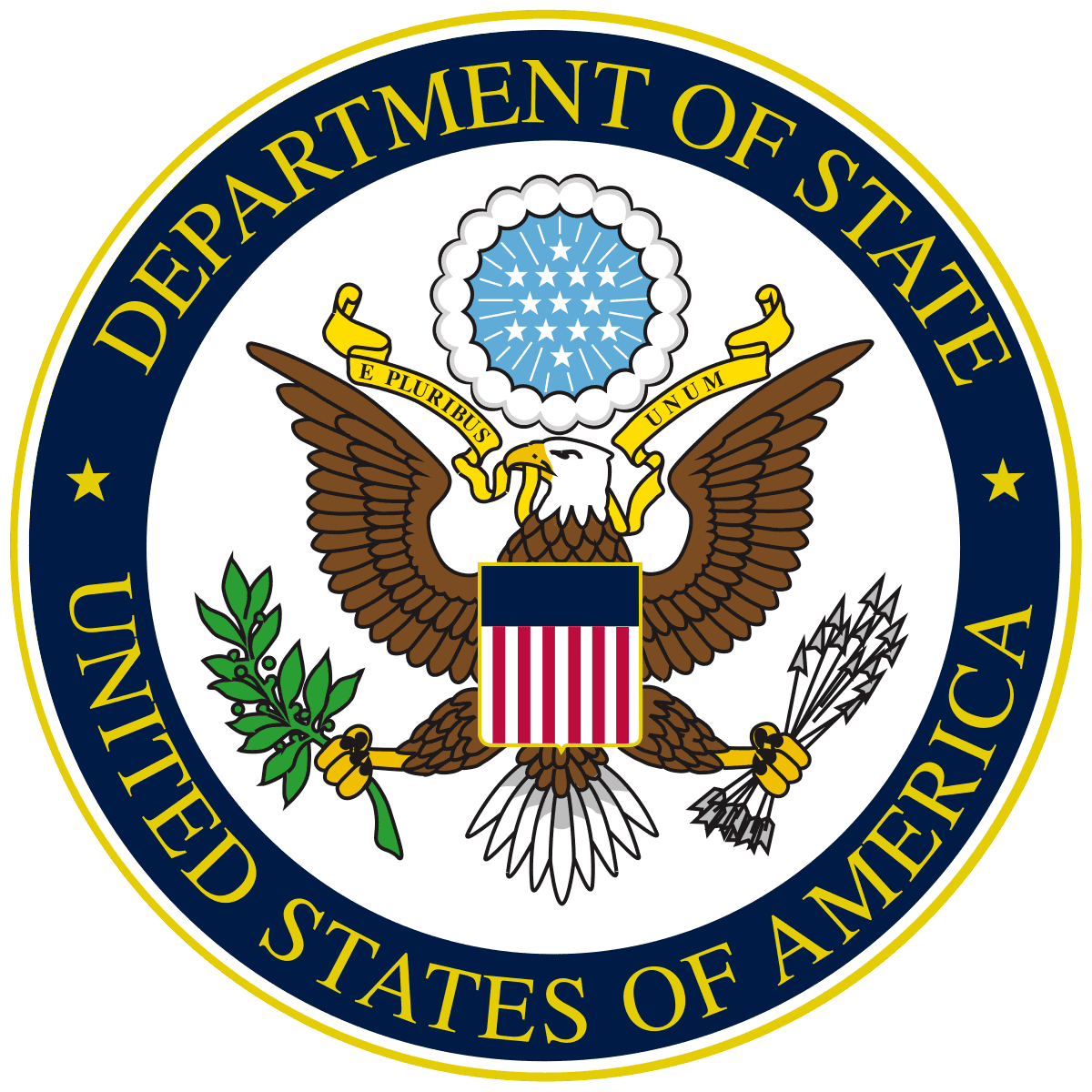
3 Aug 2023
Sustainability On the Journey Towards Nature Positivity
Posted with permission from ESG Impact Zone.
As the only international NGO focused exclusively on enabling private sector action for nature, WHC has convened professionals working at the intersection of business and nature since 1990. This post is a transcript of WHC President Margaret O’Gorman’s 2023 State of Corporate Conservation speech, presented in Baltimore at the 2023 WHC Conservation Conference on June 20, 2023.
Good afternoon — it’s great to see everyone here today eager to learn, network and celebrate. We’ve curated a great conference for you over the next few days, and we know that you’re going to enjoy yourselves and leave here inspired to act for nature wherever you can.
It’s always a privilege to stand before this conference, to recognize your efforts and to provide some insights into the various aspects of our world, from what’s happening on the global stage to what’s happening in our own communities and workplaces. And there is a lot happening and changing. But while our world changes, the reason we gather remains constant. The reason we gather remains to celebrate conservation and ecological stewardship efforts — whether the completion of a nature restoration project, the success of a new pollinator meadow, adoption of a new corporate biodiversity ambition or interesting and uplifting engagements with communities around environmental education or STEM.
And the reason we do the work remains unchanged: Nature needs our help, and today, nature needs our help more than ever before. I don’t want to start our conference on a down note, but a recent report from the WWF tells us that there has been a 69% average decline in wildlife populations since 1970. This is my lifetime — an average 69% decline in populations of monitored species of mammals, birds, amphibians, reptiles and fish since I’ve been born. It’s very hard to conceptualize a loss of this scale, and it’s even more difficult to conjure a picture of projected future losses. In monetary terms, according to the Intergovernmental Panel on Biodiversity and Ecosystem Services, the picture is $577 billion at risk from the loss of pollinators alone. This is more than the combined value of the market cap of Toyota, Bayer, WM and Shell. That loss would be a massive hit to the global economy. But the bigger picture is a more emotional loss, seen and heard in the greying and quietening of our world as the colors and sounds of nature become hushed and muted. This loss means we won’t be handing the same vibrant planet we inherited to the generations who are not yet born.
The difficulty of conceptualizing this loss is one of the contributing factors to the fact that the nature crisis has been a lagging global concern when it should be, in my opinion, seen as important — if not more so — than the climate crisis. The difficulty in conceptualizing the loss, in measuring the loss and in disclosing the impacts of the loss, has delayed a much-needed consensus on how we should talk about it and how we should set aspirations or ambitions to address it. We tried on “no net loss/net positive impact” for a while but that didn’t fit. We’ve played with the mitigation hierarchy, but that is just an express lane to offsets. We’ve had the trillion-tree goal and the 30 by 30 initiative, but they don’t have a wide enough remit, excluding entire species and ecosystems. But a global goal has finally been determined, and that goal is to be nature positive by 2030.
So what does nature positive actually mean? The term is designed to be broad, but we’re all in agreement that nature positive means three things — recognizing the many values of nature, reversing the loss of biodiversity and moving towards nature recovery and regeneration. These are actions that most everyone at this conference are taking at the moment. These are actions that we are here to celebrate today and tomorrow.
Basically, nature positive is biodiversity’s net zero with a critical difference: While net zero is a destination, nature positive is a journey. No entity can ever claim to be “nature positive.” Whether an NGO, government agency, private citizen or private sector, no enterprises can claim with 100% certainty to be nature positive. But all can claim to be — and should be — on a journey towards nature positivity.
And the beauty of this approach is that you can take this journey in different ways, just like we all arrived here today along routes and using different forms of transportation and from different directions.
The private sector will take this journey in different ways and from different starting points. We know that. We at WHC have a deep understanding from working in this space for 35 years, and we know that there is no single defined route for a nature journey. We know that it’s not always straight, it’s not always moving in the right direction and there may be twists and turns on the way. We know that companies start their nature journeys in different places — sometimes at operations when EHS compliance on environmental regulations become beyond compliance for ecological reasons, sometimes at the corporate office when investors and rating agencies ask interesting questions.
We know that some companies get on the highway and speed towards their destinations on well-resourced roads, while others may follow the scenic route, take the U-turns and get diverted by every roadside attraction. Many run out of gas…repeatedly.
But conformity is not the most important aspect of this journey; being on the journey is what’s essential. We currently work with an alliance of life sciences companies to help engage the companies and their suppliers with nature, and each of them is starting in a different place and moving at different speeds.
Where do you think you are on your nature journey, and what type of road are you taking? Is it swift and straight, slow and sinewy — or are you more like Ted Lasso at the moment, who says about traveling with Robert Frost, “It could go either way…”
The concept of nature positivity really came to the fore this past year, in advance of an important meeting that happened in Montreal in December. Last December saw one of the biggest gatherings for biodiversity on the planet at the 15th Conference of Parties to the Convention of Biological Diversity (CBD COP15), when delegations from more than 190 countries gathered with numerous observer delegations from across the world to agree on a new plan to turn the tide on the loss of nature. The meeting was two years late thanks to the global pandemic, and the sense of urgency was palpable as delegates gathered for long hours and fractious discussions to negotiate the wording for what would become the Kunming-Montreal Global Biodiversity Framework, which was adopted by the Convention delegates in late December. The framework sets out an ambitious pathway to reach the global vision of a world living in harmony with nature by 2050. It’s not as ambitious as nature positive by 2030, but what international treaty could ever be?
In 2016, I attended COP13 as part of the WHC delegation of two people. At COP15, WHC had a delegation of 15 people, including WHC members Covia, GM and others. At COP13, the business representation was small — Toyota and GM were present, and CEMEX led the way on a global Business and Biodiversity pledge. In Montreal, business was a significant segment of the meeting, and many voices from business were showcased talking about nature-positive ambitions and actions. And in the resulting global biodiversity framework, a specific target for business was agreed upon — the first time there is a role for business in this global convention.
The Business for Nature coalition, of which WHC is a partner, led the campaign to make it mandatory for business to report their nature-related risks, and indeed, Target 15 of the Global Biodiversity Framework asks that large and multinational businesses do just that and that the parties to the convention, the governments, support policy measures to encourage and enable business to engage with this target — which, yes, asks for reporting, but also looks for companies to act to reduce negative impacts and increase positive ones.
I have to clarify that the U.S. is not a party to the convention, but that matters little in these days of the global economy and the multinational companies many of you work for or the international supply chains you are all part of. Target 15 and supporting regulations will find its way to you. To help us understand more about Target 15 and the Global Biodiversity Framework, we have two sessions tomorrow — one looking at the global stage for biodiversity and another about how companies can build an ESG strategy that includes biodiversity.
While much of the attention on Target 15 focuses on reporting and disclosures, we here today are already achieving towards the part of Target 15 that seeks to increase business’s positive impacts on nature. We are so far into this aspect of Target 15 that we’re presenting 23 awards for outstanding positive impacts on nature over the next two days. Congratulations to the award winners announced this morning, and good luck to the nominees for the rest of this meeting.
So what does all this mean? This Global Biodiversity Framework, Target 15 and the infrastructure being developed to support it and other evolving initiatives seeking to drive a better business relationship with nature?
For one thing, it means that for the last year or so, I’ve had a serious case of the “told you so’s” as developments on the global, regional and national scales from think tanks and academics have validated the work that we have all been doing for the last 35 years enabling the private sector to act for nature.
What it also means is that finance and standards bodies are paying attention. Asset managers launched nine new biodiversity funds in 2022. Last year, the first biodiversity credits were sold, priced at $32 an acre. This year, for the first time, a company was excluded from an investment fund on the basis of biodiversity. CERES, the sustainable investing advocacy group, launched Nature 100 to mobilize investors to take actions to reduce nature loss and accelerate nature recovery.
ISO is issuing a standard in the field of biodiversity to develop principles, framework, requirements, guidance and supporting tools in a holistic and global approach for all organizations.
And to support all of this, there are more corporate positions with the title “Manager, Nature” that sit in sustainability offices. This particular fact impacted us this past year when one of our own, Josiane Bonneau, who many of you know, took her many talents to take a position of Manager, Nature at Freeport-McMoRan. We miss her a lot!
So: Bottom line, what does it all mean?
I think it means we should retire, once and for all, a question I am amazed still gets asked today. Given where we are on our nature journey, I am amazed that I still get asked for the business case for nature. I still get asked what the ROI on acting for nature is. I get asked why time and resources should be expended on biodiversity or other nature-based efforts.
When I’m asked the question today — “What’s the business case for nature? Why should business care about nature?” — I answer in three ways. The first and simplest answer to me is that we need nature for life, and if that’s not enough, my second answer is that there can be no business without nature. Just like businesses depend on financial capital to thrive, they also depend on natural capital to survive. If those two reasons are not enough, my third answer is that soon this question will be moot as business will be compelled to care about nature to comply with a suite of regulations and policies being developed to support the implementation of the Global Biodiversity Framework.
I get it — the need to ask the question. I understand why, just 10 years ago, we had to wrap biodiversity and nature into a business case. It was only seven years ago that the World Economic Forum started to talk about biodiversity collapse as a significant risk to the global economy. It was only last year that business found a place in the global treaty for biodiversity, and only this year are frameworks like the Task Force for Nature Related Financial Disclosures and others emerging to support business engagement.
The business case for nature has been made. So let’s agree that we don’t need to ask anymore. The evidence is vast and beyond reproach. If anyone today is still asking what the business case for nature is, it’s not because they don’t know. It’s because they don’t want to know.
And this growing awareness is not just about the perils to nature; it’s also about the power of nature. Here in the U.S., realizations about the power of nature to alleviate some societal issues is taking root. The Inflation Reduction Act bill set aside billions of dollars to fight social inequities with nature-based solutions; e.g., the urban and community forestry program in the USFS has an annual appropriation of $32 million, and this year received an increase to $40 million — which is great, but it also received $1.5 billion in one-off funding to increase the health of our national urban forest and bring urban forestry benefits to the communities that bear an unfair burden of environmental impacts like urban heat islands, air pollution and even light and noise pollution. The EPA included nature-based solutions as an approved methodology in its most recent Pollution Prevention program, and last year the administration released a “Roadmap for Nature-Based Solutions to Fight Climate Change, Strengthen Communities, and Support Local Economies,” while this year, the “Campaign for Environmental Justice” was launched at the 21st Urban Waters Partnership meeting, showing how much nature is being deployed to improve communities, lives and livelihoods.
It's all happening for nature right now. Governments, companies, banks and NGOs are all at the starting line ready to take the nature-positive journey. And we here in this room are ready for it. We were born ready for this, and we’re looking forward to doing more, especially at the intersection of business, nature and community.
Across our 35-year history, WHC has worked with members where they work, and this sometimes means where communities have suffered impact from existing and legacy operations. Our newly named Social Impact team, led by Daniel Goldfarb, who is celebrating his 20th year at WHC this year — can we hear it for Daniel’s two-decade commitment to the cause of corporate and community conservation? Daniel and his team has been working in these places for two decades, and in the last two months alone, have put in long hours and hectic days delivering nature to communities in Detroit, Chicago and northwest Indiana and almost 500 trees in the last few weeks alone in Detroit. This small but mighty team has convened companies to cross their fence lines and engage with the communities that host them, creating new relationships and helping companies deliver community benefits that are real, measurable and sustainable — and focused on the places where they are most needed.
The Social Impact team recently carried out some spatial analysis and found that of 528 certified programs in the USA, 70% lie within five miles of an overburdened community. This is a really interesting finding for WHC and its members because it shows that we are making a difference where it is needed and we have the power to make an even bigger difference to deploy nature to engineer resilience to the impacts of climate change, to make places where people can thrive and deliver healthy habitats for plants and animals to share space with us. We in this room have the ability to wield nature and deploy its power in the places that need it most.
We’re here to celebrate these places today and tomorrow as we recognize every conservation project that has made a difference and met requirements for certification. In 2022, we received applications from 283 unique programs, of which 280 were successful. Of the 280 successful applications, 58 received certification at the gold level, indicating that they are truly outstanding, and 54 were recognized at the silver level. We had 41 new programs seeking certification including certifications from new companies like Allegion, Blue Triton Brands, Grupo Mexico, Lannon Stone Products, Molex and others.
We worked with 38 reviewers in 2022, with each program receiving two reviews to ensure consistency of scoring, and these reviewers look at each program through its constituent projects. They reviewed 364 habitat projects, 387 species projects and 183 education projects. The top themes continue to be Grassland, Landscaped and Wetlands habitat projects, Avian and Pollinator species projects and Awareness and Community engagement in our education projects. We continue to see strong representation in our Other category for Species of Concern and Green Infrastructure projects. Let’s celebrate all of our certified programs with a round of applause for everyone who submitted an application in 2022. Thank you for your hard work.
This year, we had a series of really interesting projects from Mexico, like Vulcan Material’s SAC-TUN site’s program in the Yucatan Peninsula in Quintana Roo, Mexico. This program focuses on collecting data to better understand the conservation needs and status of threatened and endangered species such as the jaguar, Nassau grouper and Caribbean spiny lobster. The site, which I visited many years ago, contains over 1,000 hectares of forests and is home to at least 130 species of plants and 384 vertebrates, including 21 that are endemic to Mexico. In addition, the team conducts conservation activities in Ejido Manuel Antonio Ay. The project is part of Vulcan’s long-term environmental strategy, to restore exploited lands, reduce the impact of new operations and position the company as a leader in the conservation of the Mesoamerican Reef, the second most important coral reef on the planet.
Another partner in Mexico, the Earth Lab, is also working with ejido communities and received certification for a jaguar conservation program in Ejido Sisal, which has almost 3,000 hectares under management for this iconic species as well as managing forests and intertidal zones.
Another iconic species in Mexico and the U.S. that came to our attention this year is the Mexican grey wolf. When the Mexican grey wolf was declared functionally extinct in the wild in 1976 and officially listed under the Endangered Species Act, the United States and Mexico collaborated to capture all Mexican grey wolves remaining in the wild to prevent their extinction. Five wild Mexican wolves were captured alive in Mexico from 1977 to 1980 and used to start a captive breeding program. After the Mexican Wolf Recovery Plan was implemented, wolves were reintroduced into recovery areas in Arizona and New Mexico beginning in 1998 in order to recolonize the animals' historical range. From those five wolves captured in the late 70s, there are now 241 wild Mexican wolves in the U.S. and 45 in Mexico.
The complete interview is also available.
Image of WHC President Margaret O’Gorman from ESG Impact Zone.
Follow us on social media:


.d57b427b.png&w=3840&q=75)

















